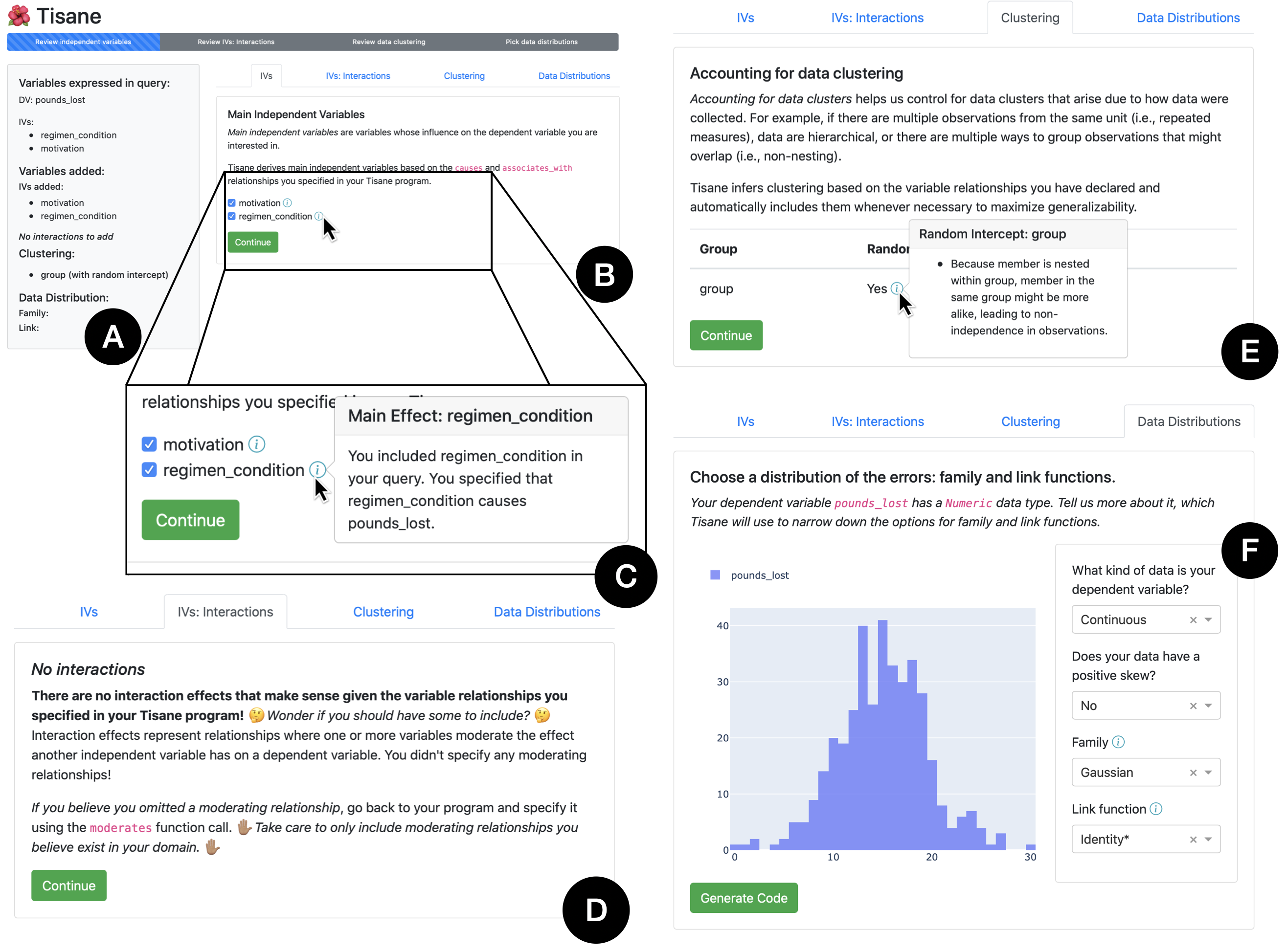UW Interactive Data Lab
papers

Tisane: Authoring Statistical Models via Formal Reasoning from Conceptual and Data Relationships
Eunice Jun, Audrey Seo, Jeffrey Heer, René Just.
Proc. ACM Human Factors in Computing Systems (CHI), 2022
Proc. ACM Human Factors in Computing Systems (CHI), 2022

Materials
Abstract
Proper statistical modeling incorporates domain theory about how concepts relate and details of how data were measured. However, data analysts currently lack tool support for recording and reasoning about domain assumptions, data collection, and modeling choices in an integrated manner, leading to mistakes that can compromise scientific validity. For instance, generalized linear mixed-effects models (GLMMs) help answer complex research questions, but omitting random effects impairs the generalizability of results. To address this need, we present Tisane, a mixed-initiative system for authoring generalized linear models with and without mixed-effects. Tisane introduces a study design specification language for expressing and asking questions about relationships between variables. Tisane contributes an interactive compilation process that represents relationships in a graph, infers candidate statistical models, and asks follow-up questions to disambiguate user queries to construct a valid model. In case studies with three researchers, we find that Tisane helps them focus on their goals and assumptions while avoiding past mistakes.
BibTeX
@inproceedings{2022-tisane,
title = {Tisane: Authoring Statistical Models via Formal Reasoning from Conceptual and Data Relationships},
author = {Jun, Eunice AND Seo, Audrey AND Heer, Jeffrey AND Just, Ren\'{e}},
booktitle = {Proc. ACM Human Factors in Computing Systems (CHI)},
year = {2022},
url = {https://idl.uw.edu/papers/tisane},
doi = {10.1145/3491102.3501888}
}
